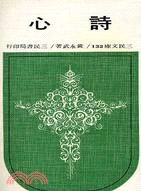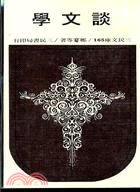定價
:NT$ 2700 元無庫存,下單後進貨(採購期約4~10個工作天)
下單可得紅利積點:81 點
商品簡介
作者簡介
名人/編輯推薦
目次
相關商品
商品簡介
This all-new edition of a best-selling text has been thoroughly updated to keep pace with the rapid progress in signal transduction research.
With didactic skill and clarity, the molecular basis of signal transduction, regulated gene expression, the cell cycle, tumorigenesis and apoptosis is made transparent for everyone with a basic knowledge in biochemistry or molecular biology.
"Valuable up-to-date information on biochemistry of signal transduction and regulation" (AFS)
"The clear and didactic presentation makes it a textbook very useful for students and researchers not familiar with all aspects of cell regulation." (Biochemistry)
"This book is actually two books: Regulation and Signal Transduction." (Drug Research)
With didactic skill and clarity, the molecular basis of signal transduction, regulated gene expression, the cell cycle, tumorigenesis and apoptosis is made transparent for everyone with a basic knowledge in biochemistry or molecular biology.
"Valuable up-to-date information on biochemistry of signal transduction and regulation" (AFS)
"The clear and didactic presentation makes it a textbook very useful for students and researchers not familiar with all aspects of cell regulation." (Biochemistry)
"This book is actually two books: Regulation and Signal Transduction." (Drug Research)
作者簡介
Gerhard Krauss is Professor of Biochemistry at the University of Bayreuth (Germany). His resarch is centered on the mechanism of interaction of DNA binding proteins and their target DNA. He is specifically interested in transcription factor, DNA methyl transferases and nucleotide excision repair.
The idea for a textbook on Signal Transduction and Gene Regulation originated from a lecture course that he has been teaching at Bayreuth since the middle of the 1990s.
The idea for a textbook on Signal Transduction and Gene Regulation originated from a lecture course that he has been teaching at Bayreuth since the middle of the 1990s.
名人/編輯推薦
“This book offers a very nice general overview of the current knowledge of signal transduction and regulation. The author has done an excellent job of assimilating an inherently complicated subject into clear, simple, and logical descriptions.” (The Quarterly Review of Biology, June 2009)
"Krauss has set out to update a general resource for those with interest in signal transduction. The addition of an introductory chapter (Ch.1) makes this edition well pitched to undergraduate with some knowledge of cell biology and biochemistry and would serve as a suitable textbook for an upper-level undergraduate course in this area. the text would also be a useful reference to beginning graduate students in signal transaction and a ready compliment to course that rely on primary literature for course discussions. For instructors, this book would make an excellent companion for teaching signal transduction, as the figures are well laid out and illustrate clearly many points." (Biochemistry and Molecular Biology Education, September/October 2008)
"Well pitched to undergraduates with some knowledge of cell biology and biochemistry and would serve as a suitable textbook for an upper-level undergraduate course in this area. The text would also be a useful reference to beginning graduate students in signal transduction and a ready compliment to courses that rely on primary literature for course discussions. For instructors, this book would make an excellent companion for teaching signal transduction, as the figures are well laid out and illustrate clearly many key points." (Biochemistry and Molecular Biology Education, September/October 2008)
"Krauss has set out to update a general resource for those with interest in signal transduction. The addition of an introductory chapter (Ch.1) makes this edition well pitched to undergraduate with some knowledge of cell biology and biochemistry and would serve as a suitable textbook for an upper-level undergraduate course in this area. the text would also be a useful reference to beginning graduate students in signal transaction and a ready compliment to course that rely on primary literature for course discussions. For instructors, this book would make an excellent companion for teaching signal transduction, as the figures are well laid out and illustrate clearly many points." (Biochemistry and Molecular Biology Education, September/October 2008)
"Well pitched to undergraduates with some knowledge of cell biology and biochemistry and would serve as a suitable textbook for an upper-level undergraduate course in this area. The text would also be a useful reference to beginning graduate students in signal transduction and a ready compliment to courses that rely on primary literature for course discussions. For instructors, this book would make an excellent companion for teaching signal transduction, as the figures are well laid out and illustrate clearly many key points." (Biochemistry and Molecular Biology Education, September/October 2008)
目次
Preface.
1 Basics of Cell Signaling.
1.1 Cell Signaling: Why, When and Where?
1.2 Intercellular Signaling.
1.3 Hormones in Intercellular Signaling.
1.4 Intracellular Signaling: Basics.
1.5 Molecular Tools for Intracellular Signaling.
1.6 Basic Mechanisms of Intracellular Signaling.
1.7 Modular Structure of Signaling Proteins and Signaling Complexes.
1.8 Organization of Signaling.
1.9 Variability and Cell-type Specificity of Signaling.
1.10 References.
2 Regulation of Enzyme Activity.
2.1 Basis of Enzyme Catalysis.
2.2 Basics of Allosteric Regulation.
2.3 Regulation of Enzymes by Effector Molecules.
2.4 Regulation of Enzyme Activity by Phosphorylation.
2.5 “Ubiquitin (Ub)–Proteasome” Pathway.
2.6 Lipidation of Signaling Proteins.
2.7 References.
3 Regulation of Gene Expression.
3.1 Basic Steps of Gene Expression.
3.2 Components of the Eukaryotic Transcription Machinery.
3.3 Principles of Transcription Regulation.
3.4 Control of Transcription Factors.
3.5 Chromatin Structure and Transcription Regulation.
3.6 Posttranscriptional Regulation of Gene Expression.
3.7 Regulation by RNA Interference (RNAi).
3.8 References.
4 Signaling by Nuclear Receptors.
4.1 Ligands of Nuclear Receptors.
4.2 Principles of Signaling by Nuclear Receptors.
4.3 Classification and Structure of Nuclear Receptors.
4.4 Mechanisms of Transcriptional Regulation by Nuclear Receptors.
4.5 Regulation of Signaling by Nuclear Receptors.
4.6 The Signaling Pathway of the Steroid Hormone Receptors.
4.7 Signaling by Retinoids, Vitamin D3 and the T3 Hormone.
4.8 Nongenomic Functions of Nuclear Receptors and their Ligands.
4.9 References.
5 G-protein-coupled Signal Transmission Pathways.
5.1 Transmembrane (TM) Receptors: General Structure and Classification.
5.2 Structural Principles of TM Receptors.
5.3 GPCRs.
5.4 Regulatory GTPases.
5.5 Heterotrimeric G-proteins.
5.6 Receptor-independent Functions of Heterotrimeric G-proteins.
5.7 Effector Molecules of G-proteins.
5.8 GPCR Signaling via Arrestin.
5.9 References.
6 Intracellular Messenger Substances: "Second Messengers".
6.1 General Properties of Intracellular Messenger Substances.
6.2 cAMP.
6.3 cGMP and Guanylyl Cyclases.
6.4 Metabolism of Inositol Phospholipids and Inositol Phosphates.
6.5 Storage and Release of Ca2+.
6.6 Functions of Phosphoinositides.
6.7 Ca2+ as a Signal Molecule.
6.8 DAG as a Signal Molecule.
6.9 Other Lipid Messengers.
6.10 NO Signaling Molecule.
6.11 References.
7 Ser/Thr-specific Protein Kinases and Protein Phosphatases.
7.1 Classification, Structure and Characteristics of Protein Kinases.
7.2 Structure and Regulation of Protein Kinases.
7.3 PKA.
7.4 Phosphatidylinositol-3-kinase (PI3K)/Akt Pathway.
7.5 PKC.
7.6 Ca2+/Calmodulin-dependent Protein Kinases (CaMKs).
7.7 Ser/Thr-specific Protein Phosphatases.
7.8 References.
8 Signal Transmission via Transmembrane Receptors with Tyrosine-Specific Protein Kinase Activity.
8.1 Structure and Function of RTKs.
8.2 Protein Modules in Downstream Signaling of RTKs.
8.3 Non-RTK-specific Protein Kinases.
8.4 PTPs.
8.5 Adaptor Molecules of RTKs.
8.6 References.
9 Signal Transmission via Ras Proteins.
9.1 Ras Superfamily of Monomeric GTPases.
9.2 GAPs of the Monomeric GTPases.
9.3 GEFs of the Monomeric GTPases.
9.4 Inhibitors of G-nucleotide dissociation GDIs.
9.5 Ras Family of Monomeric GTPases.
9.6 Raf Kinase as an Effector of Signal Transduction by Ras Proteins.
9.7 Further Ras Family Members: R-Ras, Ral and Rap.
9.8 Reception and Transmission of Multiple Signals by Ras Protein.
9.9 Further Branches of the Ras Superfamily.
9.10 Ras Protein Network and Crosstalk within the Ras Superfamily.
9.11 References.
10 Intracellular Signal Transduction: Protein Cascades of the Mitogen-activated Protein Kinase Pathways.
10.1 Organization and Components of MAPK Pathways.
10.2 Regulation of MAPK Pathways by Protein Phosphatases and Inhibitory Proteins.
10.3 Specificity in MAPK Activation and Organization in Multiprotein Complexes.
10.4 Major MAPK Pathways of Mammals.
10.5 References.
11 Membrane Receptors with Associated Tyrosine Kinase Activity.
11.1 Cytokines and Cytokine Receptors.
11.2 Structure and Activation of Cytokine Receptors.
11.3 T and B Cell Receptors (TCRs and BCRs).
11.4 Signal Transduction via Integrins.
11.5 References.
12 Other Transmembrane Receptor Classes.
12.1 Receptors with Intrinsic Ser/Thr Kinase Activity: TGF-b Receptor and SMAD Protein Signaling.
12.2 Receptor Regulation by Intramembrane Proteolysis: Notch Receptor.
12.3 References.
13 Regulation of the Cell Cycle.
13.1 Principles of Cell Cycle Control.
13.2 Key Elements of the Cell Cycle Apparatus.
13.3 CDK–Cyclin Complexes.
13.4 Regulation of the Cell Cycle by Proteolysis.
13.5 G1 Progression and S-phase Entry.
13.6 Cell Cycle Control of DNA Replication.
13.7 The G2/M Transition and CDC25C Phosphatase.
13.8 Progression through the M phase: APC and the Metaphase–Anaphase Transition.
13.9 Summary of Cell Cycle Progression.
13.10 DNA Damage and DNA Replication Checkpoints.
13.11 References.
14 Malfunction of Signaling Pathways and Tumorigenesis: Oncogenes and Tumor Suppressor Genes.
14.1 General Aspects of Tumor Formation.
14.2 Signaling Proteins Mutated in Cancer: Oncogenes.
14.3 Tumor Suppressor Genes: General Functions.
14.4 Rb in Cancer.
14.5 p16INK4a Gene Locus and ARF.
14.6 Tumor Suppressor Protein p53.
14.7 Wnt/b-Catenin Signaling and the Tumor Suppressor APC.
14.8 Genomic instability and Tumor Formation: Roles of DNA Repair and DNA Damage Checkpoints.
14.9 Common Physiologic Changes in Tumor Cells: Hallmarks of Cancer.
14.10 References.
15 Apoptosis.
15.1 Basic Functions of Apoptosis.
15.2 Overview of Apoptotic Pathways.
15.3 Caspases: Death by Proteolysis.
15.4 Bcl-2 Proteins Family: Gatekeepers of Apoptosis.
15.5 The Mitochondrial Pathway of Apoptosis.
15.6 Death Receptor-triggered Apoptosis.
15.7 Links of Apoptosis to Cellular Signaling Pathways.
15.8 References.
Subject Index.
1 Basics of Cell Signaling.
1.1 Cell Signaling: Why, When and Where?
1.2 Intercellular Signaling.
1.3 Hormones in Intercellular Signaling.
1.4 Intracellular Signaling: Basics.
1.5 Molecular Tools for Intracellular Signaling.
1.6 Basic Mechanisms of Intracellular Signaling.
1.7 Modular Structure of Signaling Proteins and Signaling Complexes.
1.8 Organization of Signaling.
1.9 Variability and Cell-type Specificity of Signaling.
1.10 References.
2 Regulation of Enzyme Activity.
2.1 Basis of Enzyme Catalysis.
2.2 Basics of Allosteric Regulation.
2.3 Regulation of Enzymes by Effector Molecules.
2.4 Regulation of Enzyme Activity by Phosphorylation.
2.5 “Ubiquitin (Ub)–Proteasome” Pathway.
2.6 Lipidation of Signaling Proteins.
2.7 References.
3 Regulation of Gene Expression.
3.1 Basic Steps of Gene Expression.
3.2 Components of the Eukaryotic Transcription Machinery.
3.3 Principles of Transcription Regulation.
3.4 Control of Transcription Factors.
3.5 Chromatin Structure and Transcription Regulation.
3.6 Posttranscriptional Regulation of Gene Expression.
3.7 Regulation by RNA Interference (RNAi).
3.8 References.
4 Signaling by Nuclear Receptors.
4.1 Ligands of Nuclear Receptors.
4.2 Principles of Signaling by Nuclear Receptors.
4.3 Classification and Structure of Nuclear Receptors.
4.4 Mechanisms of Transcriptional Regulation by Nuclear Receptors.
4.5 Regulation of Signaling by Nuclear Receptors.
4.6 The Signaling Pathway of the Steroid Hormone Receptors.
4.7 Signaling by Retinoids, Vitamin D3 and the T3 Hormone.
4.8 Nongenomic Functions of Nuclear Receptors and their Ligands.
4.9 References.
5 G-protein-coupled Signal Transmission Pathways.
5.1 Transmembrane (TM) Receptors: General Structure and Classification.
5.2 Structural Principles of TM Receptors.
5.3 GPCRs.
5.4 Regulatory GTPases.
5.5 Heterotrimeric G-proteins.
5.6 Receptor-independent Functions of Heterotrimeric G-proteins.
5.7 Effector Molecules of G-proteins.
5.8 GPCR Signaling via Arrestin.
5.9 References.
6 Intracellular Messenger Substances: "Second Messengers".
6.1 General Properties of Intracellular Messenger Substances.
6.2 cAMP.
6.3 cGMP and Guanylyl Cyclases.
6.4 Metabolism of Inositol Phospholipids and Inositol Phosphates.
6.5 Storage and Release of Ca2+.
6.6 Functions of Phosphoinositides.
6.7 Ca2+ as a Signal Molecule.
6.8 DAG as a Signal Molecule.
6.9 Other Lipid Messengers.
6.10 NO Signaling Molecule.
6.11 References.
7 Ser/Thr-specific Protein Kinases and Protein Phosphatases.
7.1 Classification, Structure and Characteristics of Protein Kinases.
7.2 Structure and Regulation of Protein Kinases.
7.3 PKA.
7.4 Phosphatidylinositol-3-kinase (PI3K)/Akt Pathway.
7.5 PKC.
7.6 Ca2+/Calmodulin-dependent Protein Kinases (CaMKs).
7.7 Ser/Thr-specific Protein Phosphatases.
7.8 References.
8 Signal Transmission via Transmembrane Receptors with Tyrosine-Specific Protein Kinase Activity.
8.1 Structure and Function of RTKs.
8.2 Protein Modules in Downstream Signaling of RTKs.
8.3 Non-RTK-specific Protein Kinases.
8.4 PTPs.
8.5 Adaptor Molecules of RTKs.
8.6 References.
9 Signal Transmission via Ras Proteins.
9.1 Ras Superfamily of Monomeric GTPases.
9.2 GAPs of the Monomeric GTPases.
9.3 GEFs of the Monomeric GTPases.
9.4 Inhibitors of G-nucleotide dissociation GDIs.
9.5 Ras Family of Monomeric GTPases.
9.6 Raf Kinase as an Effector of Signal Transduction by Ras Proteins.
9.7 Further Ras Family Members: R-Ras, Ral and Rap.
9.8 Reception and Transmission of Multiple Signals by Ras Protein.
9.9 Further Branches of the Ras Superfamily.
9.10 Ras Protein Network and Crosstalk within the Ras Superfamily.
9.11 References.
10 Intracellular Signal Transduction: Protein Cascades of the Mitogen-activated Protein Kinase Pathways.
10.1 Organization and Components of MAPK Pathways.
10.2 Regulation of MAPK Pathways by Protein Phosphatases and Inhibitory Proteins.
10.3 Specificity in MAPK Activation and Organization in Multiprotein Complexes.
10.4 Major MAPK Pathways of Mammals.
10.5 References.
11 Membrane Receptors with Associated Tyrosine Kinase Activity.
11.1 Cytokines and Cytokine Receptors.
11.2 Structure and Activation of Cytokine Receptors.
11.3 T and B Cell Receptors (TCRs and BCRs).
11.4 Signal Transduction via Integrins.
11.5 References.
12 Other Transmembrane Receptor Classes.
12.1 Receptors with Intrinsic Ser/Thr Kinase Activity: TGF-b Receptor and SMAD Protein Signaling.
12.2 Receptor Regulation by Intramembrane Proteolysis: Notch Receptor.
12.3 References.
13 Regulation of the Cell Cycle.
13.1 Principles of Cell Cycle Control.
13.2 Key Elements of the Cell Cycle Apparatus.
13.3 CDK–Cyclin Complexes.
13.4 Regulation of the Cell Cycle by Proteolysis.
13.5 G1 Progression and S-phase Entry.
13.6 Cell Cycle Control of DNA Replication.
13.7 The G2/M Transition and CDC25C Phosphatase.
13.8 Progression through the M phase: APC and the Metaphase–Anaphase Transition.
13.9 Summary of Cell Cycle Progression.
13.10 DNA Damage and DNA Replication Checkpoints.
13.11 References.
14 Malfunction of Signaling Pathways and Tumorigenesis: Oncogenes and Tumor Suppressor Genes.
14.1 General Aspects of Tumor Formation.
14.2 Signaling Proteins Mutated in Cancer: Oncogenes.
14.3 Tumor Suppressor Genes: General Functions.
14.4 Rb in Cancer.
14.5 p16INK4a Gene Locus and ARF.
14.6 Tumor Suppressor Protein p53.
14.7 Wnt/b-Catenin Signaling and the Tumor Suppressor APC.
14.8 Genomic instability and Tumor Formation: Roles of DNA Repair and DNA Damage Checkpoints.
14.9 Common Physiologic Changes in Tumor Cells: Hallmarks of Cancer.
14.10 References.
15 Apoptosis.
15.1 Basic Functions of Apoptosis.
15.2 Overview of Apoptotic Pathways.
15.3 Caspases: Death by Proteolysis.
15.4 Bcl-2 Proteins Family: Gatekeepers of Apoptosis.
15.5 The Mitochondrial Pathway of Apoptosis.
15.6 Death Receptor-triggered Apoptosis.
15.7 Links of Apoptosis to Cellular Signaling Pathways.
15.8 References.
Subject Index.
主題書展
更多
主題書展
更多書展今日66折
您曾經瀏覽過的商品
購物須知
為了保護您的權益,「三民網路書店」提供會員七日商品鑑賞期(收到商品為起始日)。
若要辦理退貨,請在商品鑑賞期內寄回,且商品必須是全新狀態與完整包裝(商品、附件、發票、隨貨贈品等)否則恕不接受退貨。
























